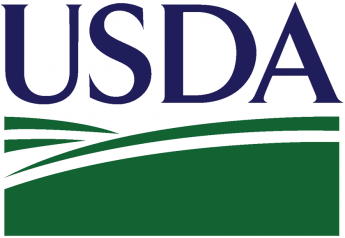Pro Farmer Evening Report: April 20, 2022

Check our advice monitor on ProFarmer.com for updates to our marketing plan.
Sharp slowdown in feedlot placements expected... USDA’s Cattle on Feed Report on Friday is expected to show feedlots dramatically slowed their placement of animals during March. After aggressively moving calves off pastures during fall and winter, available supplies have been reduced. Marketings are also expected to be down from year-ago, though not as dramatically as placements. The April 1 feedlot inventory is expected to come in 0.4% above year-ago.
|
|
Avg. Trade Estimate (% of year-ago) |
Range |
Million head |
|
On Feed on April 1 |
100.4 |
99.5-101.0 |
11.945 |
|
Placements in March |
92.2 |
87.0-96.0 |
1.842 |
|
Marketings in March |
98.2 |
97.7-98.7 |
2.004 |
High winds, hot temps could stress Plains crops, livestock... World Weather Inc. forecasts high winds, hot temps and low humidity will hit the Central and Southern Plains late this week. The combination of the three will stress crops and livestock in the region. The worst days will likely be Friday and Saturday. World Weather says winds are expected to be lighter with more seasonable temps late in the weekend into early next week. However, another bout of higher winds and hot temps might arrive during the middle of next week.
Beige Book: Economic activity grew at a moderate pace... The U.S. economy grew at a “moderate pace” from mid-February to mid-April, the Federal Reserve said in its Beige Book survey. Consumer spending accelerated among retail and non-financial service firms, as Covid-19 cases tapered across the country. Manufacturing activity was solid overall across most Districts, but supply chain backlogs, labor market tightness, and elevated input costs continued to challenge firms’ ability to meet demand. Outlooks for future growth were clouded by the uncertainty created by recent geopolitical developments and rising prices.
Federal Reserve banks: Agricultural conditions mixed... Overall, the Federal Reserve District Banks reported mixed agricultural conditions across the country in the Beige Book report. Higher crop prices have supported farmers and the agricultural sector. However, there are some challenges facing the industry. The Dallas Federal Reserve said drought conditions in its area have worsened. It reported higher feed costs with flat cattle prices meant some cattle herds were being culled. The Kansas City Federal Reserve also noted higher feed costs for livestock producers and food processing facilities. The Chicago Federal Reserve said farmland prices were higher due to increased investor interest. Most of the districts noted greater volatility and uncertainty due to the global geopolitical issues. They also reported higher inputs costs and input availability issues.
U.S. crude oil stocks plunge... U.S. crude oil stocks dropped by 8 million barrels in the past week, according to the Energy Information Administration (EIA). Analysts polled by Reuters expected a 2.5-million-barrel increase. The drop in stocks came amid U.S. oil exports that totaled the most in two years. U.S. production hit 11.9 million barrels per day, the highest level since May 2020. U.S. gas stocks dropped by 761,000 barrels to 232.4 million barrels. Distillate stocks, which include diesel and heating oil, fell by 2.7 million barrels to 108.7 million barrels, the lowest level since May 2008.
EIA reported ethanol stocks fell 461,000 barrels to 24.342 million barrels during the week ended April 15 – the lowest level since the week ended Jan. 14, 2022.
Palm oil exports likely to rebound... Vegetable oil buyers will likely switch some purchases back to palm oil as its discount is widening compared to other vegetable oils. One broker noted palm oil is $150 per MT cheaper than soyoil. Earlier this month, palm oil was $40 per MT cheaper. In March, palm oil was higher than soyoil and sunflower oil. Brokers explained refiners are switching to palm oil for May shipments. Crude palm oil was offered to India at $1,765 per MT for May shipment, compared to $1,930 for crude soybean oil and $2,100 for crude sunflower oil.
India will likely import more than 600,000 MT of palm oil in April, compared to 539,793 MT in March. Imports in May could be more than 650,000 MT. Bangladesh and Pakistan are also buying more palm oil for May shipments, one dealer said. If the Covid outbreak is contained within the next few weeks, China could also increase its palm oil purchases.
World Bank asks to release global food stockpiles... World Bank President David Malpass called for the release of food from large international reserves to help address the worsening food insecurity crisis that has been exacerbated by spiking prices in the wake of Russia’s invasion of Ukraine, Reuters reported. He welcomed moves by India to sell food from its stockpiles and said similar steps by advanced economies would increase available supplies.
Malpass expects the current food security crisis to last at least several months and perhaps into next year.
Egypt considering allowing GM crop planting... Egypt’s government is considering allowing farmers to plant GM seeds to increase production and reduce imports, according to a member of Egypt’s government. Egypt currently prohibits importing and planting GMO seeds. However, it allows imports of GM-produced soybeans and corn that have been approved from the country of origin, especially from the United States. Planting GM crops in Egypt is implemented on a very limited scale as it is based on pollination to get improved strains of plants.
Canada’s CPI jumped in March... Canada’s consumer price index (CPI) advanced 6.7% on a year-over-year basis in March, Statistics Canada said, versus a 5.7% rise the previous month. Market expectations were for inflation to reach 6.1% in March. The March inflation rate was the highest since January 1991, when annual prices advanced 6.9%. On a month-over-month basis, CPI rose 1.4% in March, the largest advance since January 1991. On a seasonally-adjusted monthly basis, CPI was up 0.9% in March. Core inflation (minus volatile food and energy prices) rose 3.8% in March, up from 3.5% in the previous month. Economists think the inflation jump will trigger another big interest rate increase in June.
Judges approves second Smithfield antitrust case settlement... A federal judge has initially approved a $42 million settlement in a class-action lawsuit between Smithfield Foods and foodservice operators. Both parties signed the settlement on March 19 after negotiating for months. It is the second Smithfield settlement in the antitrust cases. In July 2021, the company agreed to pay $83 million to settle multiple company’s direct-purchaser claims.
Serbia limits agricultural exports... The Serbian government has restricted wheat, corn, flour and cooking oil export quantities to help stabilize its domestic market. The restrictions are on a monthly basis and for a certain period. However, the government did not provide details. Last month, the country banned basic food staple exports. However, it gradually made exceptions under pressure from traders and wheat producers.
China’s exports to North Korea rebound... China’s exports to North Korea leaped to $173.4 million from only $13.0 million a year earlier. The top export items were edible oil and wheat flour. North Korea bought $16.4 million of soybean oil, $5.1 million of palm oil, $4.3 million of wheat flour and more than $3.7 million of tobacco. North Korea has been subjected to U.N. sanctions since 2006, although the Security Council does allow for humanitarian exemptions. The U.S. is urging the U.N. Security Council to further sanction North Korea over its renewed ballistic missile launches. The U.S. is also seeking a tobacco export ban to North Korea. Its leader Kim Jong Un is known as a chain smoker.







